Tulip
Tulips are renowned for their vibrant and diverse flowers, making them one of the most popular and beloved spring-blooming bulbs. With their stunning colours and elegant form, tulips have captivated gardeners and flower enthusiasts for centuries. This comprehensive guide will explore everything you need to know about tulips, including their history, varieties, cultivation, care requirements, and more. By the end of this guide, you will have a comprehensive understanding of tulips and be inspired to incorporate these beautiful flowers into your garden or floral arrangements.
History and Origin:
Tulips have a fascinating history that traces back to the Ottoman Empire in the 16th century. Originally cultivated in the Middle East, tulips gained popularity in Europe during the Dutch Golden Age. The Netherlands became synonymous with tulips, and the country’s tulip trade and industry thrived. Today, tulips are grown and admired worldwide.
Varieties and Colors:
Tulips come in various colours, shapes, and sizes, offering various options for gardeners and floral enthusiasts. Numerous tulip varieties exist, including single-flowered, double-flowered, parrot, fringed, lily-flowered, and more. Standard tulip colours include red, yellow, pink, purple, white, and orange, with many cultivars featuring beautiful combinations and patterns.
Cultivation and Planting:
Tulips are typically planted as bulbs in the fall, allowing them to undergo a period of dormancy before sprouting and blooming in the spring. Choose a well-draining location with full or partial sun for planting. The soil should be enriched with organic matter and adequately prepared. Plant tulip bulbs at the appropriate depth, following the instructions provided for the specific variety.
Care and Maintenance:
Proper care is crucial for the successful growth and blooming of tulips. Water tulips regularly, especially during dry spells, but avoid overwatering, as excessive moisture can cause bulb rot. Apply a balanced fertilizer before planting and after flowering to support healthy growth. Deadhead spent blooms to encourage energy conservation and prevent seed production.
Pests and Diseases:
While tulips are generally resistant to pests and diseases, they can occasionally be affected by aphids, slugs, or fungal infections. Monitor your plants regularly and take appropriate measures to control infestations or diseases. Proper spacing, air circulation, and well-drained soil can help prevent potential issues.
Tulip Symbolism and Meaning:
Tulips hold symbolic meanings in different cultures and contexts. They are often associated with love, beauty, and prosperity. Red tulips symbolize deep love and passion, while yellow tulips represent happiness and cheerfulness. White tulips symbolize purity and forgiveness; purple tulips are associated with royalty and admiration.
Cut Flowers and Floral Arrangements:
Tulips are highly valued as cut flowers due to their stunning blooms and long vase life. They add elegance and vibrancy to floral arrangements, whether alone or combined with other flowers. Cut tulips at an angle and place them in clean water with flower preservatives to maximize their vase life.
Companion Planting:
Tulips can be planted alongside other spring-blooming bulbs, such as daffodils, hyacinths, or crocuses, to create beautiful colour combinations and extend the flowering season. When selecting companion plants, consider the height, bloom time, and colour compatibility.
Naturalizing Tulips:
Certain tulip varieties are suitable for naturalizing, which means they can be left undisturbed to multiply and bloom year after year. Choose perennial tulip varieties or species of tulips for naturalizing, and plant them in an area with well-drained soil and adequate sunlight.
Tulip Festivals and Gardens:
Tulips are celebrated worldwide through various tulip festivals and gardens. One of the most famous tulip festivals is the Keukenhof in the Netherlands, where millions of tulips create a breathtaking display of colours. Visit local botanical gardens or plan a trip to tulip-growing regions to immerse yourself in the beauty of these magnificent flowers.
Tulips are beautiful flowers that bring beauty and joy to gardens and floral arrangements. By following the guidelines and insights in this comprehensive guide, you can successfully cultivate and appreciate tulips in all their diversity. Experiment with different varieties, colours, and planting techniques to create stunning displays and enjoy the elegance of tulips throughout the spring season.
Things to know about Tulip
Common (vernacular) Name
एन्थूरियम (Hindi), Anthurium, Flamingo Lily, Flamingo Flower, Painter's Palette, Lace Leaf, Pigtail Plants, Tail Flower and many more.
Botanical Name
Anthurium Andraeanum
Origin
Mexico to Tropical America (Colombia, Ecuador).
Family
Araceae
Plant Type
Tropical plant
Plant Features
Ornamental / Evergreen / Exotic
Life Cycle
Perennial
Landscape Uses
Container Planting and Houseplants.
Species
Belolonchium, Calomystrium, Cardiolonchium, Chamaerepium, Cordatopunctatum, Dactylophyllium, Decurrentia, Digitinervium, Gymnopodium, Leptanthurium, Pachyneurium, Polyphyllium, Polyneurium, Porphyrochitonium, Schizoplacium, Semaeophyllium, Tetraspermium, Urospadix, Xialophyllium.
Varieties
It comes with thousand of different varieties in a diversity of leaf and flower colorations.
Size
Height : 1 to 1.5 feet tall and Width : 1 feet wide when mature.
Indoors or Outdoors
Outdoors : Anthurium can be used outdoors in shady plantings, avoid direct sun light.
Indoors : Excellent plant grow in bright light or indirect light. Best indoor plants for beginners.
Blooming / Flowering
Blooming period is throughout the year.
Flower Colour
It’s come with a contrasting spadix Gold, Yellow, Orange, Pink, White, Green, Purple, Red, Burgundy, Multicolored and Variegated colours.
Lucky Plant
According to Feng Shui, It bring Good Luck in your relationships.
Lighting / Sun Exposure
Bright Indirect Sunlight.
Temperature
Grow best preferably warm temperature above 21°C and can be tolerate max temp. as high as 32°C.
Growth Rate
Anthurium is a slow to moderate growers plant.
Watering
Moderate watering, Mist or over head sprinkler to provide water and to improve relative humidity. Not tolerate overwatering it may cause root damage and yellowing of the leaves.
Fertilizer
Slow-release fertilizer, or a water-soluble liquid fertilizer once or twice in the growing season (Spring through Summer).
i.e. - Cow dung, DAP, Compost, NPK 30-10-10 fertilizer, liquid organic fertilizer etc.
Pruning
Pruning of Anthurium not much is needed. However, trimming away only discolored or dead leaves.
Propagation
Seeds : The best time to sow your Anthurium seeds is in the end of Winter / early Spring but it can't can give good result.
Stem Cuttings : The easier methods of propagation of Anthurium in water or in soil via stem cuttings, and can be done during the warm growing season.
Division : Division of Anthurium can be done in Rainy season, or better in February to March.
Dormancy Period
Month : November to February (winter season)
Shed their leaves and show poor growth, Watering minimally.
Avoid : Propagate, Fertilize and Repotting.
Container
Ceramic Pot, Plastic Pot, Terracotta or Clay Pot is preferred, which ensures good drainage as well as water holding capacity.
Soil Type
A well-drained Loam / Coarse potting soil is recommended as well as water holding capacity. Prevent soggy potting medium.
Our recommendation for potting mix : Equal part mixture of Garden Soil (25%) + Compost (25%) + River Sand (25%) + Cocopeat (25%). You can substitute pieces of Charcoal, Vermicompost, Perlite etc.
Soil pH
Lightly Acidic soil - Ideally 5.5 to 6.5 pH (potential of hydrogen) is recommended for Anthurium.
Repotting
It is advisable to repot the Anthurium every year or two preferably spring to midsummer season.
Maintenance
Low maintenance and easy to grow.
Properties
Toxic or Poisonous to both humans and pets upon ingestion.
Benefits
Excellent indoor air purifier, Anthurium plants turns CO2 into oxygen. It purifies indoor air by removing harmful chemicals like ammonia, toluene, xylene and formaldehyde.
Special Features
Doesn't attract hummingbirds and pollinators like butterflies and bees or wasps.
Infestation / Pests
Aphids, Scale insects, Thrips, Mealy bugs, Spider mites and caterpillars etc.
Diseases / Problem
Physiological Problem : Anthracnose, Leaf Spot and Powdery Mildew.
Bacterial Problem : Bacterial Blight, Bacterial Wilt and Black Nose Disease.
Fungal Problems : Root Rot and Water Mold.
Some Glimpse of Tulip

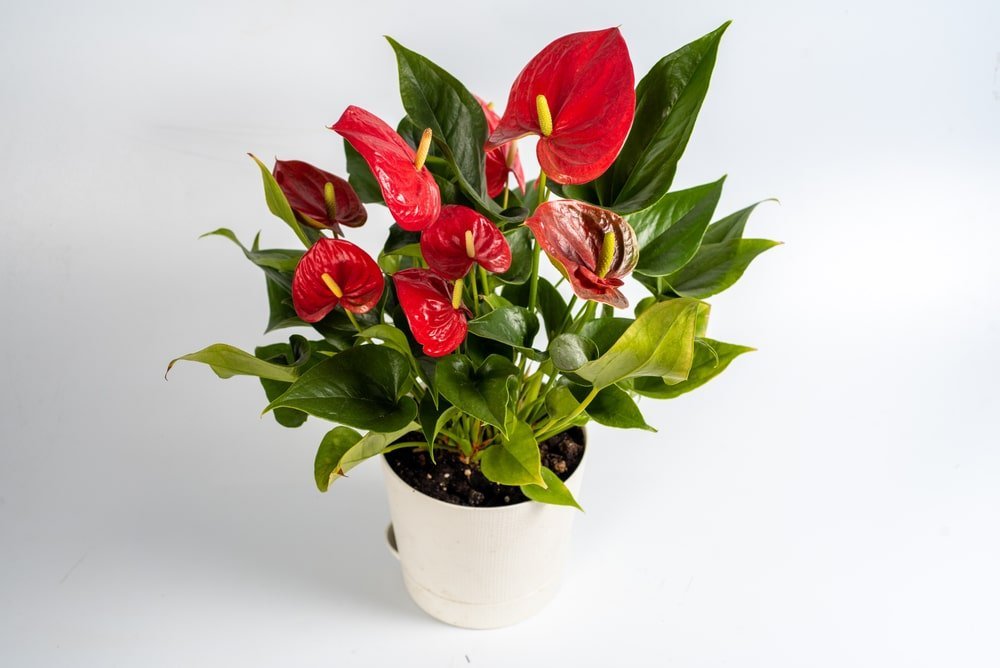
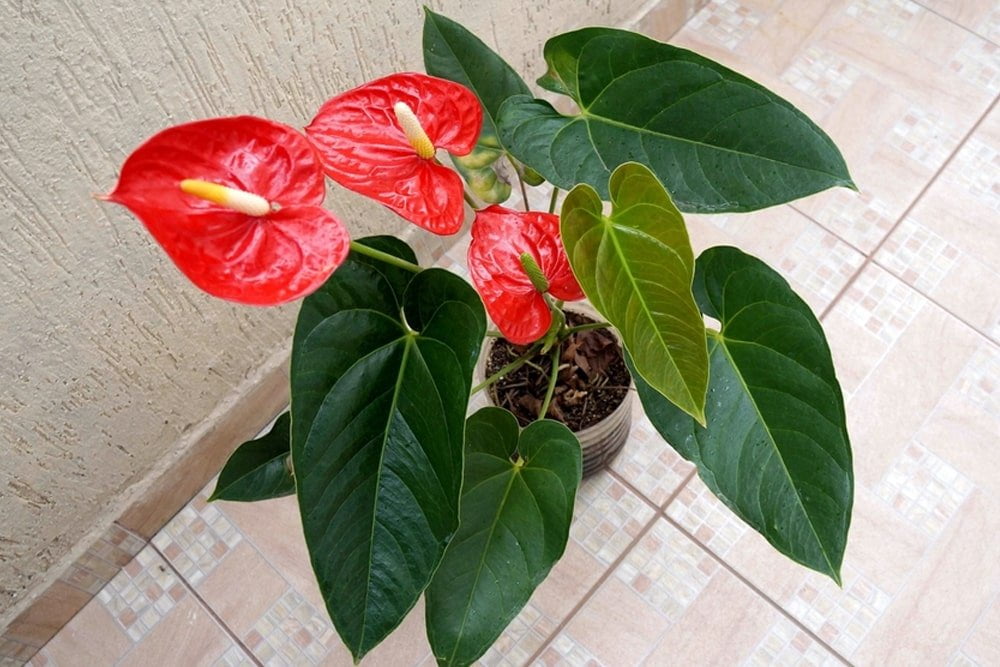


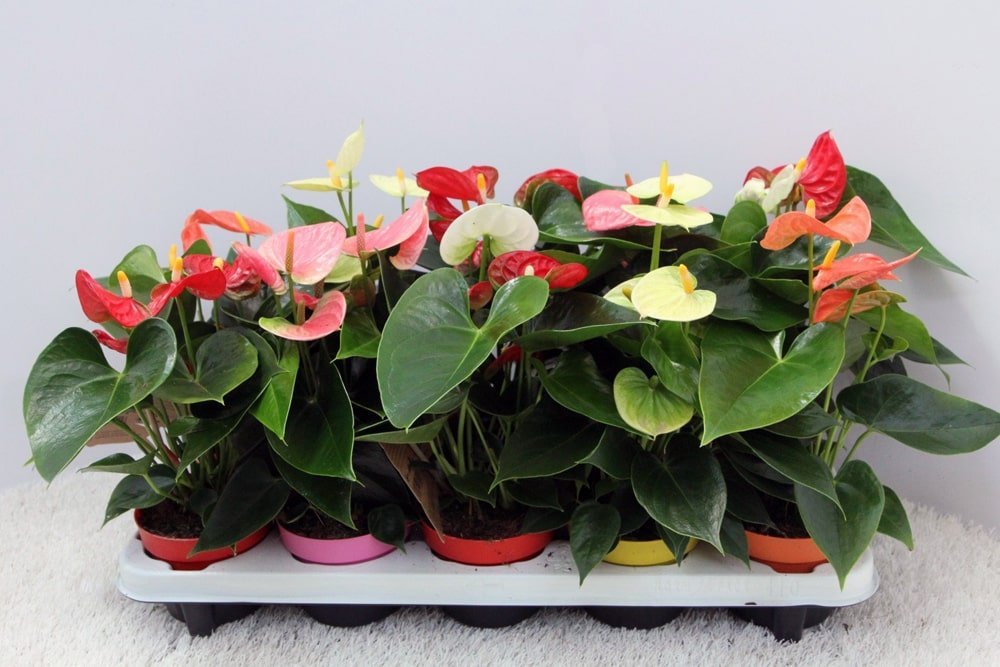


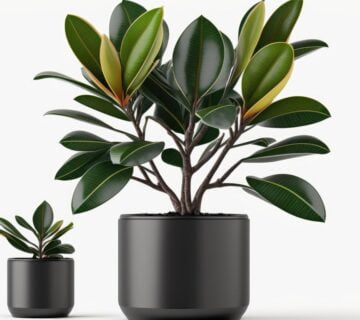
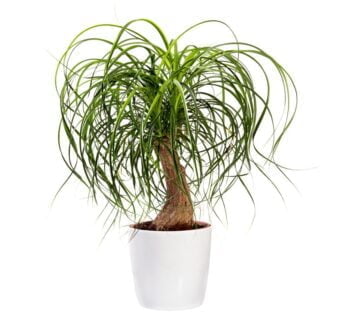
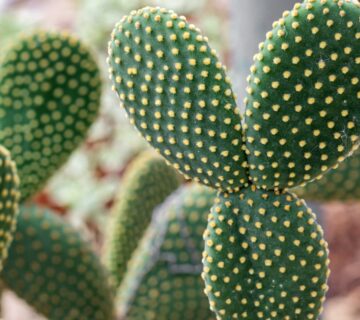
No comment